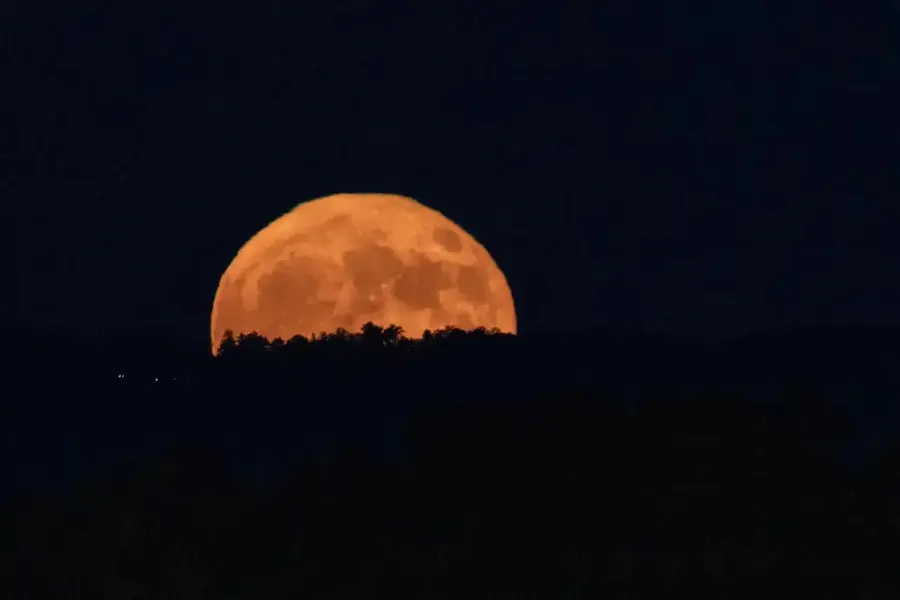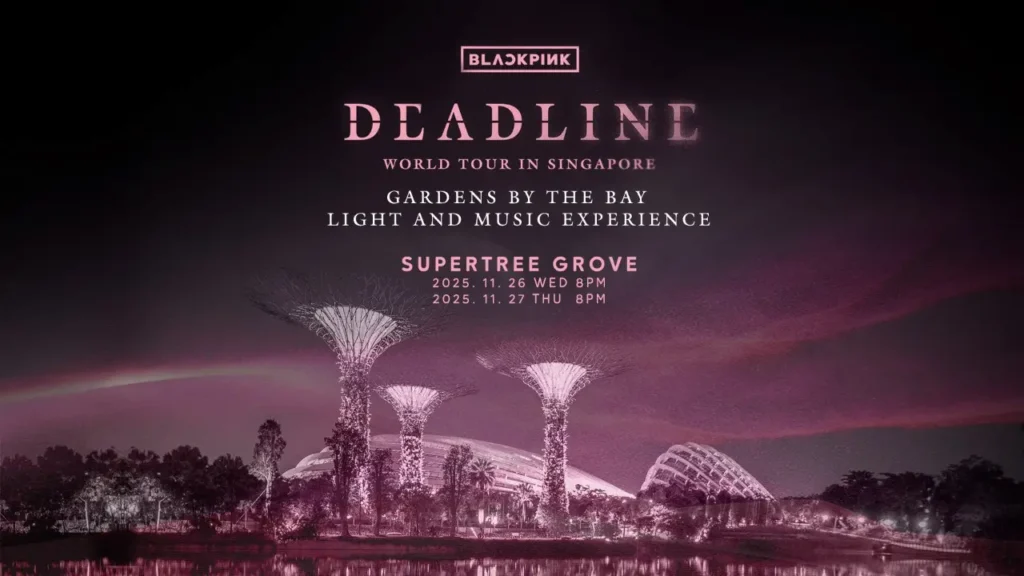
Photo Credits: NASA
November 2025 brings a rare celestial treat for Singaporeans as two stunning astronomical events coincide in the night sky. The Beaver Moon supermoon and the Taurids meteor shower will grace Singapore’s skies simultaneously, offering stargazers an unforgettable double spectacle. Whether you’re an avid astronomy enthusiast or simply curious about these natural wonders, this November presents the perfect opportunity to witness something truly special.
Understanding the Beaver Moon
The Beaver Moon earns its charming name from North American Indigenous peoples and early European settlers who observed nature’s rhythms closely. November traditionally marked the time when beavers became especially industrious, reinforcing their dams and gathering food supplies before winter’s arrival. For trappers, it signalled the season to set beaver traps before waterways froze over, as beaver pelts provided essential warmth during harsh winter months.
This November’s Beaver Moon qualifies as a supermoon because it occurs when the moon reaches its closest orbital point to Earth, known as perigee. On 5th November 2025, the moon will sit approximately 356,000 kilometres from Earth, significantly closer than the typical full moon distance of around 384,400 kilometres. This proximity makes the Beaver Moon appear roughly 7% larger and substantially brighter than an ordinary full moon.
The term “supermoon” describes a full moon that occurs within 90% of its closest approach to Earth. Whilst the size difference might seem subtle to casual observers, the increased brightness is unmistakable. The moon follows an elliptical orbit around Earth, varying between approximately 363,300 kilometres at perigee and 405,500 kilometres at apogee. When a full moon aligns with perigee, the result is a supermoon that can appear up to 14% bigger and 30% brighter than the faintest moon of the year.
The Beaver Moon represents the second of three consecutive supermoons illuminating Singapore’s skies in 2025. The first, known as the Harvest Moon, appeared in October, whilst the Cold Moon will follow in December. This triple supermoon sequence occurs because the moon’s elliptical orbit occasionally aligns multiple full moons near perigee over successive months.
The Taurids Meteor Shower Explained
The Taurids meteor shower comprises two distinct streams—the Southern Taurids and Northern Taurids—both originating from debris left by Comet Encke as it journeys through our solar system. This ancient comet, believed to be remnants of a much larger comet that fragmented roughly 10,000 years ago, creates the largest meteoroid stream in the inner solar system.
Unlike many meteor showers that produce quick, faint streaks, the Taurids are renowned for their slow-moving, brilliant meteors. Because Comet Encke has such a short orbital period, the resulting meteors have the slowest impact speed amongst well-known annual meteor showers, travelling at approximately 65,000 miles per hour as they enter Earth’s atmosphere. This slower velocity, combined with weightier debris consisting of pebbles rather than dust grains, creates spectacular fireballs that can rival the moon’s brightness.
The shower gets its name from the constellation Taurus, where meteors appear to radiate from in the sky. This radiant point lies near the red star Aldebaran, marking the bull’s eye in the Taurus constellation. The Taurids are sometimes called “Halloween fireballs” because their peak activity occurs in late October and early November.
The Southern Taurids remain active from 20th October through 20th November, whilst the Northern Taurids extend from 20th October to 10th December. During typical years, the Taurids produce a modest display of around five to ten meteors per hour. However, 2025 marks a special “Taurid swarm” year—a period of enhanced activity occurring roughly every seven years when Earth passes through a particularly dense concentration of debris. During swarm years, observers may witness up to ten meteors per hour, with an increased likelihood of spectacular fireballs that leave glowing trails across the sky.
Peak Viewing Times in Singapore
Timing proves crucial for catching both celestial events at their finest. The Beaver Moon will reach peak illumination after 7:30pm on 5th November 2025, making it visible throughout the evening and night. As the moon rises above the horizon just after sunset, it will appear at its most impressive, offering the classic “moon illusion” where proximity to the horizon makes it seem even larger than when overhead.
The Southern Taurids officially peak on 5th November at approximately 9pm, coinciding perfectly with the Beaver Moon’s appearance. However, the optimal viewing window for meteor activity extends from midnight to 4am. During these pre-dawn hours, when the radiant point in Taurus climbs highest in the sky, Earth’s rotation positions Singapore optimally to intercept meteors head-on, resulting in more frequent and dramatic displays.
The Northern Taurids will reach their peak a few days later, on 9th November at around 8pm, providing a second opportunity for those who miss the initial display. Because the Taurid debris stream is spread extensively through space, meteor activity remains elevated for several days surrounding each peak.
One challenge for observers is the moon’s brightness during peak viewing times. The near-full Beaver Moon will somewhat diminish the visibility of fainter meteors, allowing only the brightest shooting stars and fireballs to stand out. However, this is precisely what makes the Taurids ideal for this occasion—their reputation for producing exceptionally bright fireballs means the best meteors will remain visible despite the moonlight.
Optimal Viewing Locations Across Singapore
Singapore’s urban environment presents challenges for astronomical observation due to widespread light pollution. However, several locations across the island offer sufficiently dark skies and unobstructed views to catch the Beaver Moon and Taurids Meteor Shower in Singapore.
Marina Barrage stands out as a premier viewing location, offering expansive open spaces with minimal obstruction and reasonably dark skies away from the brightest city centre lights. The elevated vantage point provides excellent horizons in all directions, crucial for both moonrise observation and meteor spotting.
East Coast Park presents another excellent option, particularly along the eastern shoreline where the view extends uninterrupted over the sea. The park’s length allows visitors to find quieter spots away from seafront restaurants and facilities. Positioning yourself with the ocean to the east provides a dramatic setting for watching the moon rise over the water.
The Southern Ridges walking trail system, including Mount Faber Park, offers elevated viewing positions that rise above much of the city’s immediate light pollution. These hilltop locations provide both eastern views for moonrise and darker overhead skies for meteor observation.
Singapore’s reservoirs—including Bedok Reservoir, Lower Peirce Reservoir, and MacRitchie Reservoir—surrounded by nature reserves, offer darker conditions than most urban areas. The still water creates opportunities for stunning reflections of both the supermoon and any bright meteors.
Pulau Ubin, Singapore’s rustic offshore island, provides the darkest skies available within the nation’s borders. Whilst requiring more planning and limiting viewing to daylight ferry operating hours, the reduced light pollution significantly enhances both meteor visibility and the overall celestial experience.
For those unable to venture to remote locations, even residential areas can work. High-rise residents with east-facing windows or balconies can observe the moonrise, whilst open-air carparks on higher floors or rooftop sky gardens in Housing Development Board estates provide surprisingly effective viewing platforms.
Preparing for Your Stargazing Experience
No specialised equipment is required to enjoy the Beaver Moon and Taurids Meteor Shower in Singapore—both phenomena are easily visible to the naked eye under clear conditions. However, some preparation enhances the experience significantly.
Arrive at your chosen location well before the scheduled viewing times to secure a good spot and allow your eyes to adapt to darkness. Dark adaptation takes approximately 20 to 30 minutes, during which your eyes become increasingly sensitive to faint light. Avoiding mobile phone screens and other bright lights during this period maximises your ability to spot fainter meteors.
Bringing a blanket or mat allows comfortable reclining positions ideal for scanning large portions of the sky without neck strain. Unlike observing through telescopes, meteor watching requires a wide field of view, making lying flat on your back the most effective viewing position.
Whilst looking towards the constellation Taurus helps orient yourself to the meteor shower’s radiant point, don’t stare directly at it. Meteors will appear throughout the sky, often with the longest, most dramatic trails visible away from the radiant. Allow your gaze to wander across the darker portions of the sky between the horizon and overhead.
For the Beaver Moon, the most photogenic moments occur during moonrise, when the moon appears near the horizon against familiar foreground elements. Using smartphone apps that show moon rise times and positions helps plan compositions that incorporate interesting Singapore landmarks or natural features.
Singapore’s tropical climate means November evenings remain comfortably warm, though a light jacket might be appreciated during the pre-dawn hours when viewing conditions for meteors peak. Consider bringing insect repellent, especially at locations near water or vegetation.
Weather remains the primary uncertainty. November falls within Singapore’s northeast monsoon period, which can bring increased cloud cover and occasional rain. Monitoring weather forecasts and remaining flexible with viewing dates maximises chances of clear skies. Even if 5th November proves cloudy, the days immediately before and after will still offer excellent viewing of both the supermoon and elevated Taurid activity.
The Science Behind the Spectacle
Understanding the astronomical mechanics behind these events deepens appreciation for what you’re witnessing. The moon’s elliptical orbit results from the complex gravitational interactions between Earth, the moon, and the sun. This orbit isn’t perfectly stable—it wobbles slightly over time, meaning some supermoons approach closer than others. The November 2025 Beaver Moon ranks as the second-closest supermoon of the year, making it particularly noteworthy.
Comet Encke, the parent body of the Taurids, completes its orbit around the sun every 3.3 years, the shortest period of any known comet. Over thousands of years, this frequent passage has spread debris along an enormous section of its orbital path. When Earth’s orbit intersects this debris stream, the resulting meteor shower lasts weeks rather than the single night typical of more compact meteor streams.
The debris fragments that create Taurid meteors are substantially larger than those from most meteor showers, typically pebble-sized rather than grain-sized. When these larger fragments encounter Earth’s atmosphere at tens of thousands of miles per hour, friction heats them to incandescence, creating the brilliant fireballs for which the Taurids are famous. Occasionally, larger fragments may even survive atmospheric entry partially intact, though most completely vaporise.
The coincidence of the Beaver Moon and Taurids peak on the same night is purely circumstantial—the moon’s phases follow a roughly 29.5-day cycle independent of meteor shower timing. However, this alignment creates a unique viewing experience, with the dramatically bright supermoon providing a stunning backdrop against which the brightest meteors will streak.
Historical and Cultural Significance
The Beaver Moon holds particular significance in various cultural traditions beyond its practical naming origins. In Celtic tradition, the final full moon before the winter solstice—often November’s moon—was known as the Mourning Moon, symbolising the end of one cycle and preparation for new beginnings. This period encouraged reflection on the passing year and releasing what no longer served one’s journey forward.
European folklore referred to November’s full moon as the Frost Moon, marking the transition when frost regularly appears on the ground and winter’s approach becomes undeniable. This name reflected the agricultural calendar’s rhythm, when harvesting concluded and communities prepared for the lean months ahead.
For modern observers, these historical names connect us to ancestors who relied intimately on celestial cycles for survival, navigation, and timekeeping. Before artificial lighting and digital calendars, the moon’s phases and seasonal meteor showers marked time’s passage and guided essential activities from planting to hunting to travel.
The Taurids themselves have captured human imagination throughout history. Some researchers have linked the Taurid meteor stream to significant historical events, including hypothesised impact events that may have influenced ancient civilisations. Whilst such theories remain debated, they highlight humanity’s long relationship with these celestial wanderers.
Photography Tips for Capturing the Moment
Whilst observing with the naked eye provides the most immersive experience, photographing the Beaver Moon and Taurids Meteor Shower in Singapore creates lasting memories and shareable images. Different techniques suit each phenomenon.
For supermoon photography, treat the moon like a sunlit landscape—because it is one, with the sun’s light reflecting off its surface. Start with relatively fast shutter speeds around 1/125 to 1/250 of a second, apertures between f/8 and f/14, and low ISO settings of 100 to 200. These settings prevent overexposure that washes out the moon’s surface details.
Using the longest telephoto lens available magnifies the moon significantly. Focal lengths of 300mm or longer work well, though even smartphone cameras with telephoto capabilities can capture recognisable moon images. A sturdy tripod proves essential when using long lenses, as even slight movement creates blur.
The most compelling moon photographs include interesting foreground elements—Singapore’s skyline, recognisable landmarks, or natural features—that provide scale and context. Scout locations beforehand and use moon-tracking applications to predict exactly where the moon will rise relative to your chosen foreground.
For meteor photography, wider-angle lenses capture more sky, increasing chances of recording meteors within the frame. Set your camera to manual mode with wide-open apertures (f/2.8 or wider if possible), high ISO settings between 1600 and 3200, and exposure times of 15 to 30 seconds. Point your camera towards darker portions of sky, then take continuous sequential shots throughout the viewing period.
Meteor photography requires patience and luck—you might capture multiple meteors in a single frame or none after hours of shooting. However, the memories and connection with the cosmos make the effort worthwhile regardless of results.
What Comes Next
After the Beaver Moon and Taurids Meteor Shower in Singapore conclude, astronomy enthusiasts can look forward to the final supermoon of 2025—the Cold Moon on 4th December. This supermoon will offer another opportunity to witness Earth’s natural satellite at its most impressive.
Additional meteor showers await later in November and December, including the Leonids peaking around 16-17 November and the spectacular Geminids in mid-December. The Geminids typically produce up to 150 meteors per hour under ideal conditions, making them one of the year’s most prolific showers.
The November 2025 convergence of the Beaver Moon and Taurids represents a special moment in the annual celestial calendar. Whether you’re a dedicated stargazer or simply curious about the night sky, stepping outside to witness these wonders connects you to the cosmic dance that has captivated humanity throughout history. Clear skies await, and the universe has prepared quite a show for those willing to look up.

Lens Technology Donates HK$13.1 Million in Aid Following Devastating Tai Po Fire

Commerce Dot Com Celebrated As One of Asia’s Inspiring Workplaces At ACES Awards 2025

Thai SELECT Festival Presents "The Savory Thai SELECT Night Market" and Delights Los Angeles with an Authentic Taste of Thailand

How Spoofing of Singapore Government Agencies Fuels Scams

2025 Year-End Bonus for Civil Servants in Singapore Hits Record High

Blackpink Supertree Grove Light Show Is Free This November

Singapore TOTO Draw November 2025 Latest Results

Lens Technology Donates HK$13.1 Million in Aid Following Devastating Tai Po Fire

Commerce Dot Com Celebrated As One of Asia’s Inspiring Workplaces At ACES Awards 2025

Thai SELECT Festival Presents "The Savory Thai SELECT Night Market" and Delights Los Angeles with an Authentic Taste of Thailand







